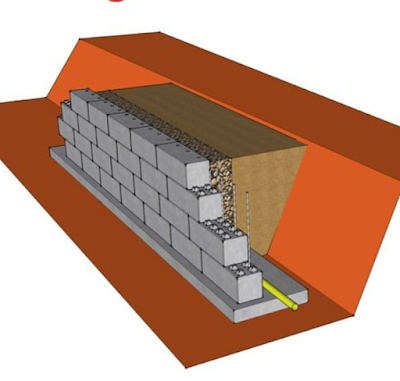How to Build a Retaining Wall
What is a Retaining Wall?
A retaining wall is a structure that holds back soil or other materials from a building, structure, or area. They are commonly used in landscaping to create terraces, level out uneven ground, and prevent soil erosion.
Types of Retaining Walls
There are several types of retaining walls, including:
- Gravity walls: These rely on their own weight to hold back the soil.
- Cantilever walls: These use a base slab and a leverage arm to support the weight of the soil.
- Counterfort walls: These use a series of vertical concrete webs to support the weight of the soil.
- Sheet piling walls: These use interlocking steel, vinyl, or wood sheets to hold back the soil.
- Anchored walls: These use cables or other reinforcements to anchor the wall to the soil behind it.
Materials Needed
Before you begin building your retaining wall, you will need the following materials:
- Retaining wall blocks or stones
- Gravel
- Sand
- Geotextile fabric
- String
- Stakes
- Shovel
- Tamper
- Saw (if cutting blocks)
- Level
Steps to Build a Retaining Wall
Follow these steps to build your own retaining wall:
- Determine the location and size of the retaining wall.
- Mark the area with stakes and string.
- Excavate the area to the depth of the first course of blocks.
- Compact the soil with a tamper.
- Lay down a layer of gravel and compact it with a tamper.
- Lay down a layer of geotextile fabric to prevent soil erosion.
- Begin laying the first course of blocks, using a level to ensure they are even.
- Continue laying courses of blocks, using adhesive to hold them in place.
- Backfill behind the wall with gravel, using a tamper to compact it.
- Finish the top of the wall with capstones.
Advantages and Disadvantages of Retaining Walls
There are several advantages and disadvantages to building a retaining wall. Some of the advantages include:
- Preventing soil erosion
- Creating a level surface for a patio or garden
- Adding visual interest to your landscaping
Some of the disadvantages include:
- The cost of materials and labor
- The potential for the wall to fail if not built properly
- The potential for the wall to cause drainage issues
FAQs
1. Can I build a retaining wall by myself?
Yes, anyone can build a retaining wall with the right tools and knowledge. However, it can be a big job and may require the help of others.
2. How high can a retaining wall be?
The height of a retaining wall depends on the materials used and the soil conditions. It is best to consult with a professional to determine the appropriate height for your wall.
3. How long does it take to build a retaining wall?
The time it takes to build a retaining wall depends on the size and complexity of the wall, as well as the skill level of the builder. It can take anywhere from a few days to several weeks to complete.
4. How do I maintain my retaining wall?
To maintain your retaining wall, you should regularly inspect it for any signs of damage or wear. You should also keep the area behind the wall clear of debris and make sure the drainage is working properly.
Building a retaining wall can be a great way to add functionality and visual interest to your outdoor space. With the right tools and knowledge, anyone can build a retaining wall that will last for years to come.

